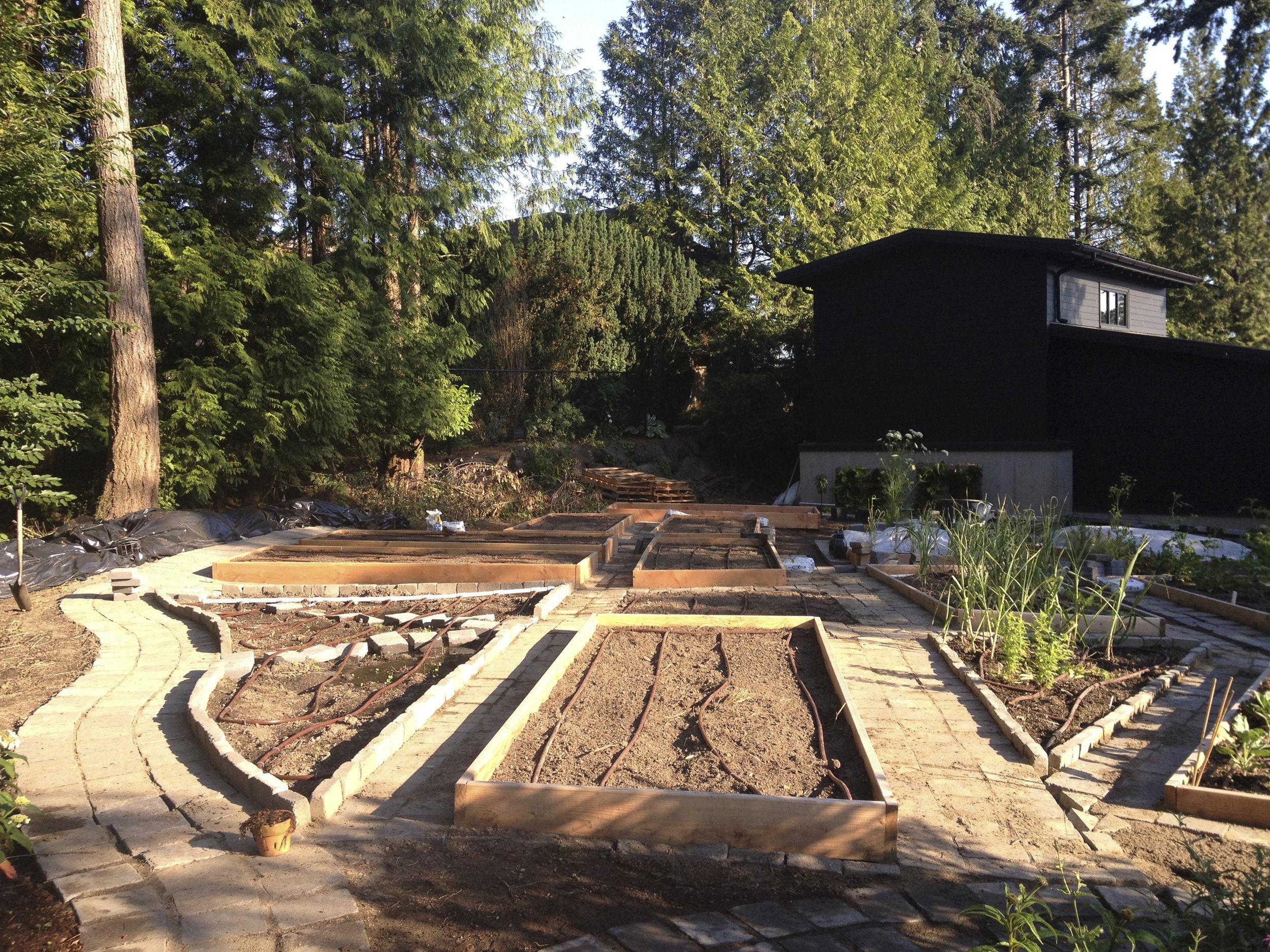Materials for Vegetable Beds - Is Treated Wood a No-No????
Spring has sprung and it seems like everyone is ready to hit the dirt, literally. This is the time of year when my garden business, GoGo Green Garden, really heats up (despite morning frosts) and everyone wants a garden RIGHT. NOW.

Today, I consulted with a new client who has bed materials ready to go, but isn't sure about their safety. She has a gorgeous stack of thick, old fir beams that were treated way back when when arsenic and other chemicals were freely used. In 2003, the EPA banned the sale of treated lumber, which contained CCA (chromated copper arsenate), but today that aged wood is often found at construction sites and can be somewhat easily salvaged.
The question then becomes, is it better NOT to use the gorgeous (free?) wood? Or is it ok to use when building vegetable beds? I found a great article in Fine Gardening, though you can read the meat of it here……….
"Sally Brown, a research assistant professor of soils at the University of Washington, knows her way around both food and metals. Starting out as a chef and then a food broker between farmers and restaurants, she became fascinated with soils and went on to earn a PhD in agronomy. Brown’s current research includes identifying the mechanisms by which organic residuals reduce the availability of soil metals to plants. She has some hard-earned opinions.
Brown says that if you already have the older, arsenic-treated wood in your garden, don’t panic. Plants will not take up arsenic unless the soils are deficient in phosphorus. That is not a problem for gardeners who use compost generously. As for the new copper-based wood treatments, Brown believes the actual risk is minimal. First of all, if plants take up too much copper, they will die before a gardener can eat them. In addition, if homegrown vegetables make up a small percentage of the diet, exposure to any metal taken up is insignificant. Do not use copper near ponds and streams because it is toxic to aquatic life."
Of course, you can always look at other materials like this lovely garden, pictured, which I built that last year for a client on Mercer Island. We re-used leftover pavers (from their new house construction) and built simple timber beds using untreated lumber. I know the masses frown on timber framed beds as inferior, but in my urban farming experience, they've held up beautifully. For a fraction of the price of cedar, timber beds maintain their structure for at least 6 years and even then, only demand the addition of re-bar supports to extend their life.
Was this article helpful?!?!? Please let me know in the comments and I'll continue adding veg bed material options, of which I have many!
